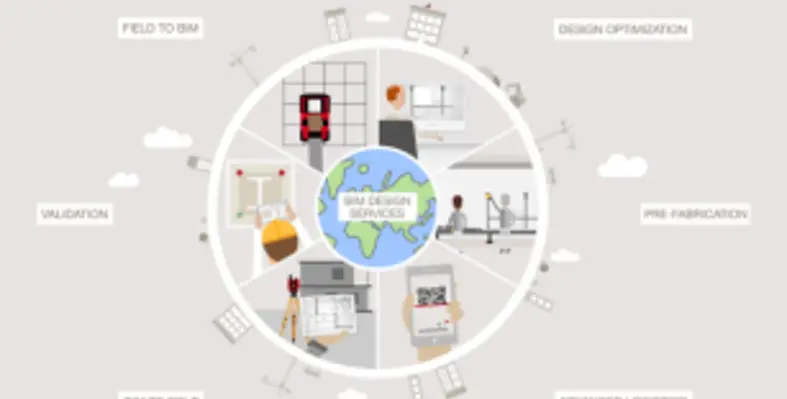At a time when construction companies look to digitise processes, Hilti?s BIM design services and digitised building tools are transforming the way construction projects are designed and managed
The construction industry is embracing digitalisation during recent challenging times. Digital technologies such as Building Information Modelling (BIM) are enabling companies to better adapt to these changes. BIM is enabling greater collaboration between extended project teams working on different areas and stages of the construction process. Workers involved in design, construction or facility management can upgrade to an extremely efficient end-to-end workflow.
Productivity gains: BIM?s single source of reference supports carrying out construction projects more efficiently leading to increased productivity. By moving from traditional setting out methods and deploying advanced layout tools businesses can increase accuracy and increase productivity on the construction site.
Cost-efficient: Businesses can see lower material costs by minimising the risk of over-ordering while streamlining installation processes by using BIM.
Collaborative: Remote co-ordination of data keeps projects going with BIM. Teams from multiple locations can access data at any time, from anywhere. The approach supports safer working and keeps projects moving.
Major features:
-Clash detection for MEP supports
-Field-to-BIM model creation - import measurements of walls, slabs, rebar and MEP elements
-BIM-to-Field ? high-speed jobsite layout
-Pre-fabrication suggestions for cutting, kitting and pre-assembly services
-Advanced logistics
-Integrated validation processes
Karl Johnson, technical marketing manager for BIM & MEP, explains the direct impacts of using BIM to improve construction processes, ?Let?s consider MEP planning: Without BIM, the support structures are planned on-site and separately by each trade involved in the construction process which can lead to higher costs and reduced productivity. Whereas BIM facilitates end-to-end planning of all trades in one go, so that support structures can be shared. This results in greater productivity on-site and less material wastage.?
By optimising design, moving from traditional single trade MEP supports and moving to common, multi-trade support, businesses can not only eliminate clashes in the digital twin, but also achieve an increase in construction site productivity of up to 70% faster installation time and a reduction in the material of up to 50%.





